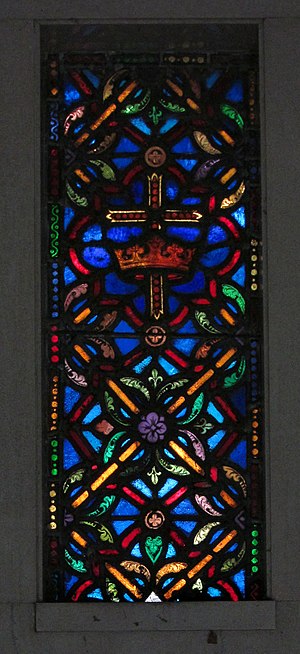
A Romanesque cube with an unusual apse in the back. The decorations in relief are particularly fine. The effect would have been better with bronze doors, but bronze doors tend to go missing, and their place has been taken by concrete.



Almost starkly modern in form, the Kress mausoleum balances its simple cubical shape with a profusion of ornamental etching, an elaborate bronze door, and unusually artistic letters for the family name.

Stained glass on the inside echoes the external ornament. There are stained-glass windows on the sides as well as in the rear.
